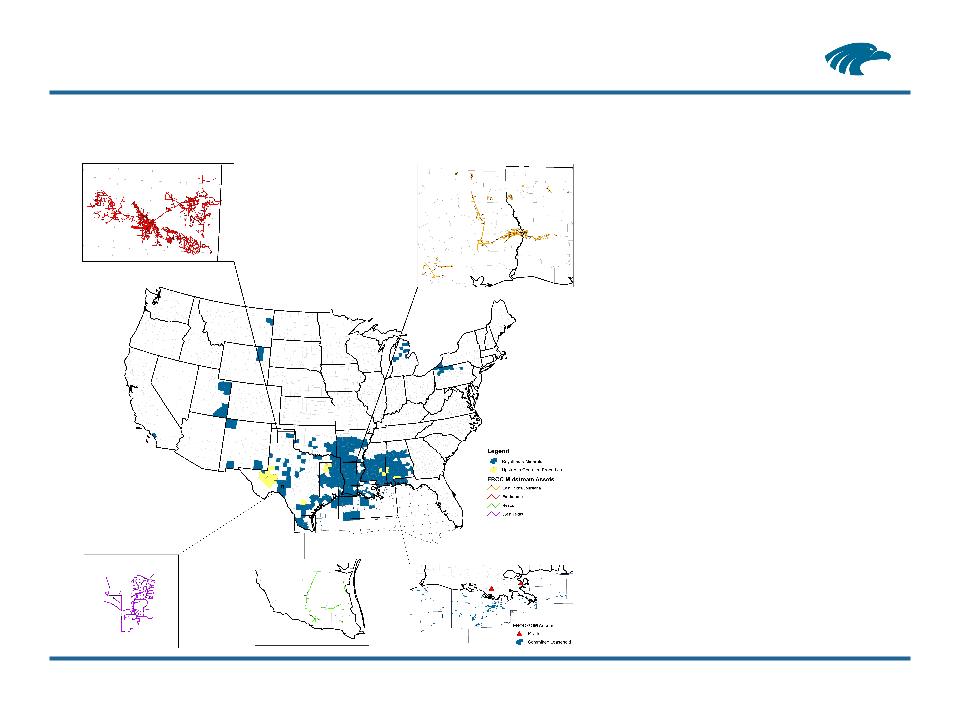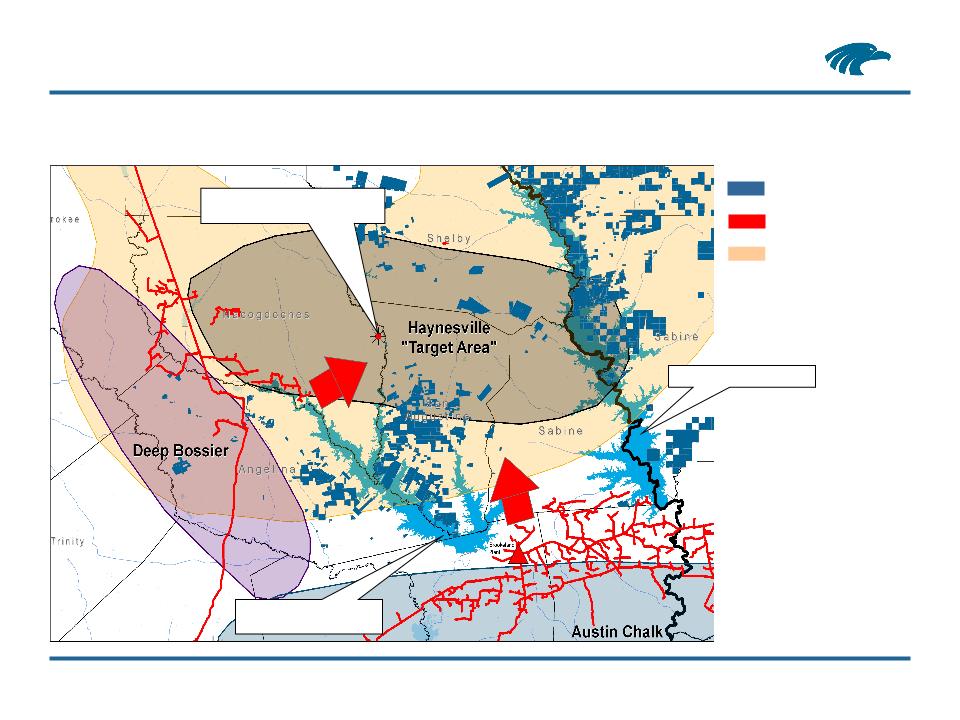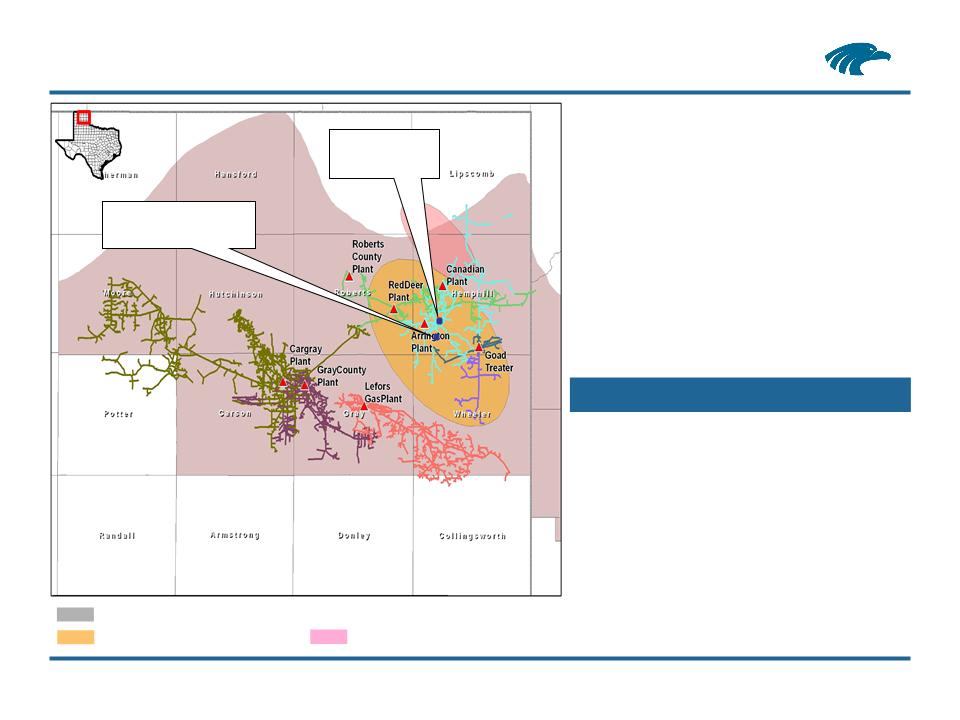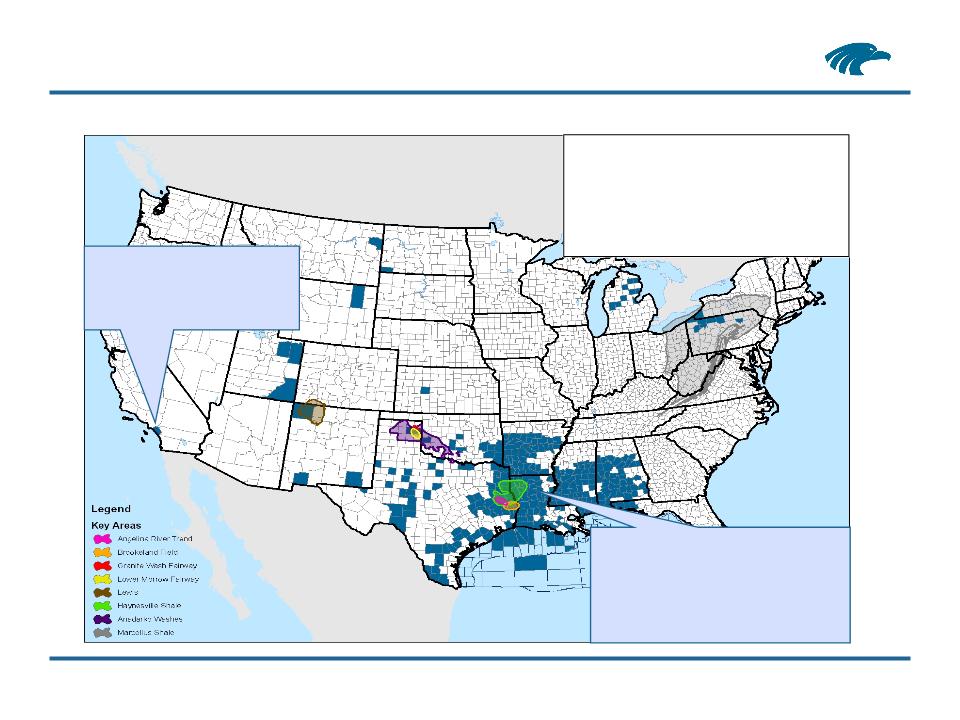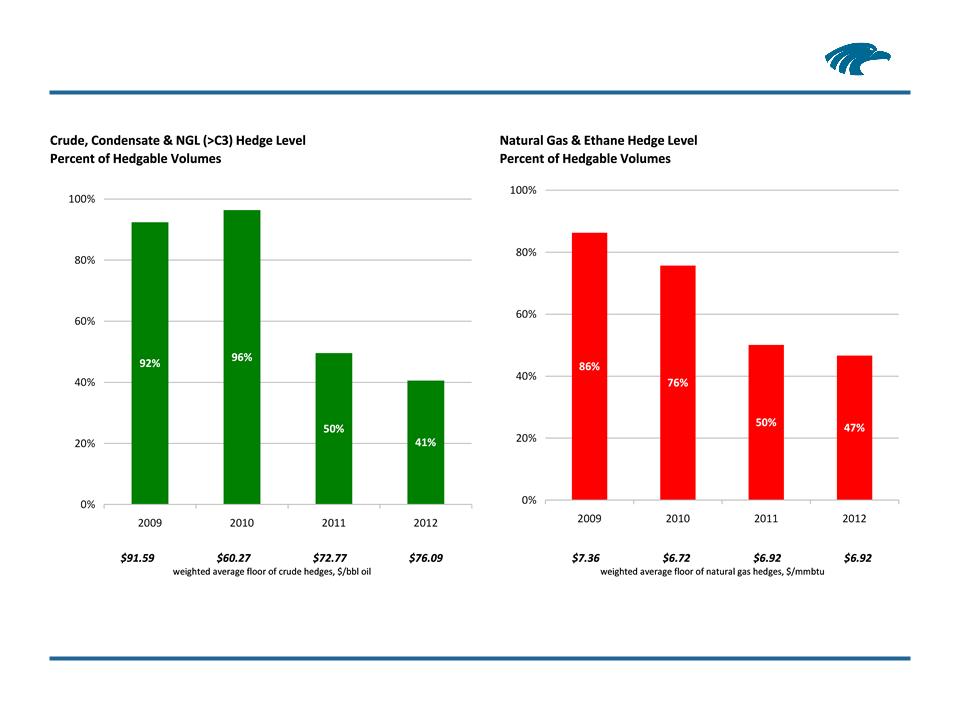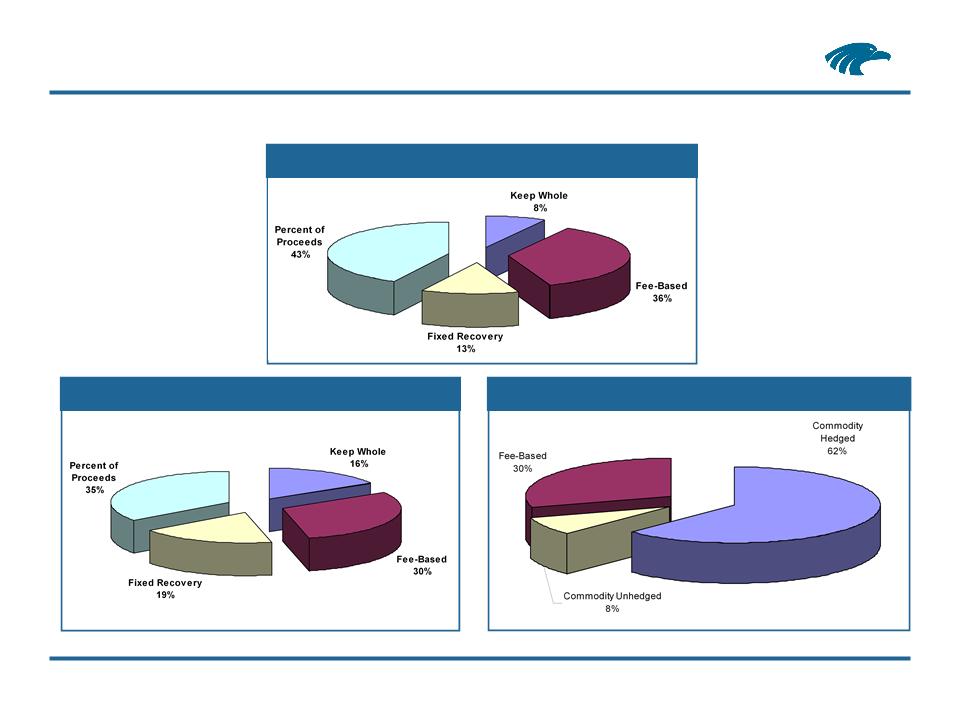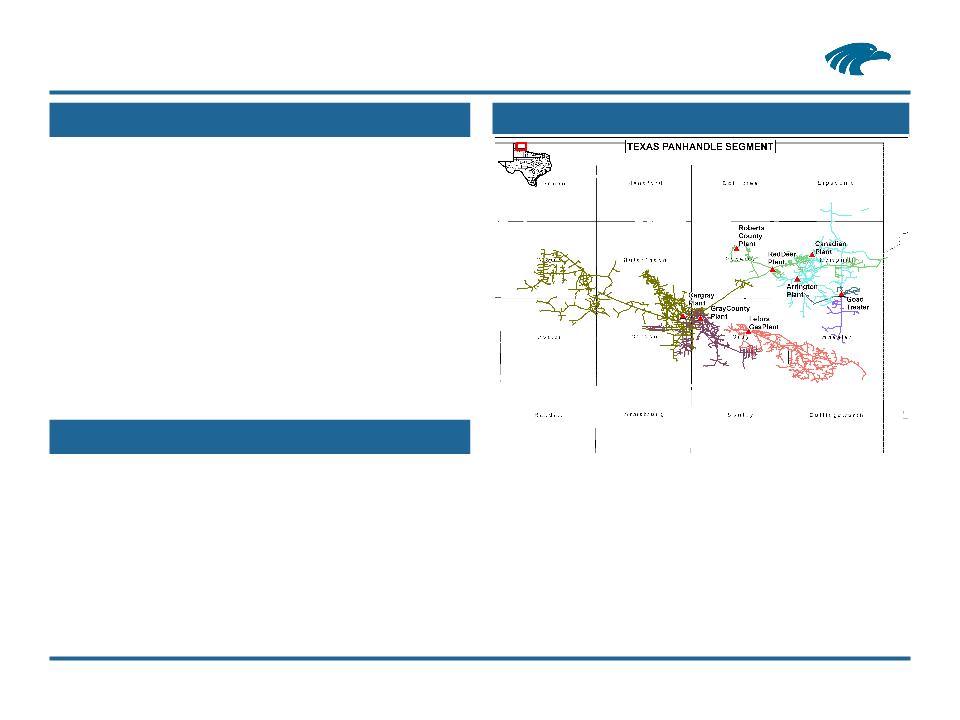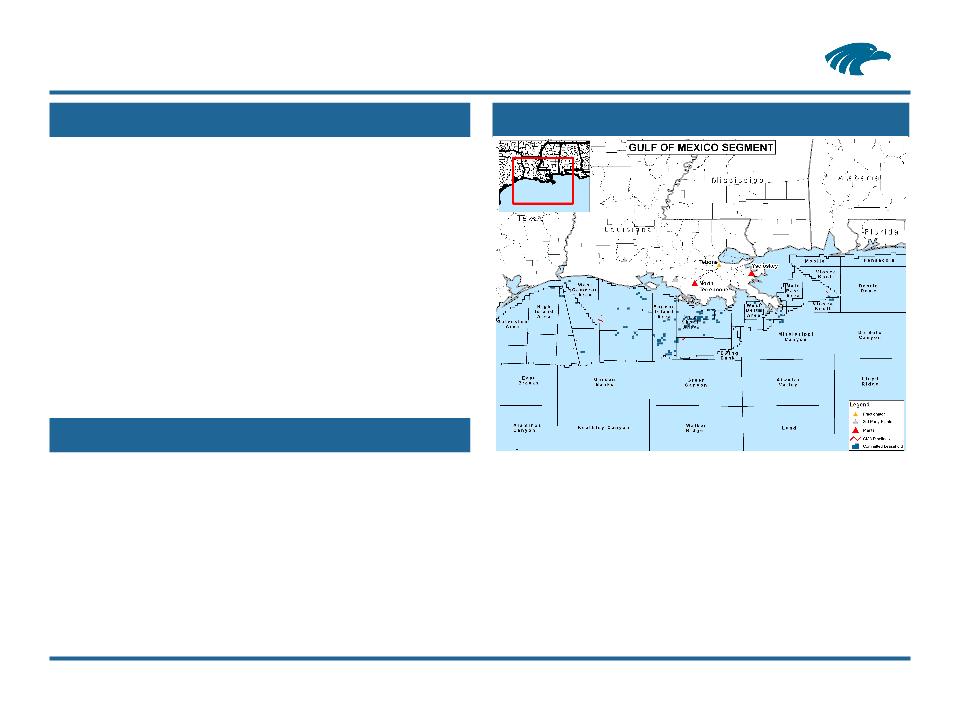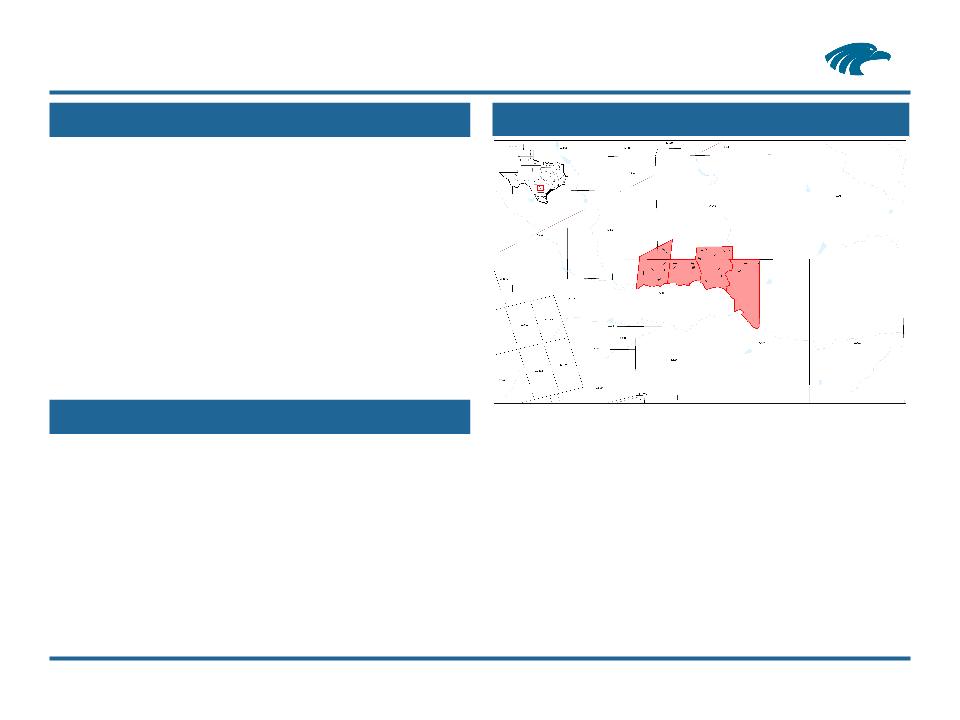31
This presentation includes, and certain statements made during this presentation may include, the non-generally accepted accounting
principles, or non-GAAP, financial measures of Adjusted EBITDA. The accompanying non-GAAP financial measures schedule provides
reconciliations of Adjusted EBITDA to its most directly comparable financial measure calculated and presented in accordance with accounting
principles generally accepted in the United States, or GAAP, with respect to the references to Adjusted EBITDA that are of a historical nature.
Where references are forward-looking or prospective in nature, and not based in historical fact, this presentation does not provide a
reconciliation. Eagle Rock could not provide such reconciliation without undue hardship because the Adjusted EBITDA numbers included in
the presentation, and that may be included in certain statements made during the presentation, are estimations, approximations and/or
ranges. In addition, it would be difficult for Eagle Rock to present a detailed reconciliation on account of many unknown variables for the
reconciling items. For an example of the reconciliation, please consult the reconciliations included for the historical Adjusted EBITDA numbers
in this appendix. Non-GAAP financial measures should not be considered as alternatives to GAAP measures such as net income (loss),
operating income (loss), cash flows from operating activities or any other GAAP measure of liquidity or financial performance.
Eagle Rock defines Adjusted EBITDA as net income (loss) plus or (minus) income tax provision (benefit); interest-net, including realized
interest rate risk management instruments and other expense; depreciation, depletion and amortization expense, impairment expense; other
operating expense, non-recurring; other non-cash operating and general and administrative expenses, including non-cash compensation
related to our equity-based compensation program; unrealized (gains) losses on commodity and interest rate risk management related
instruments; (gains) losses on discontinued operations and other (income) expenses.
Eagle Rock uses Adjusted EBITDA as a measure of its core profitability to assess the financial performance of its assets. Adjusted EBITDA
also is used as a supplemental financial measure by external users of Eagle Rock’s financial statements such as investors, commercial banks
and research analysts. For example, Eagle Rock’s lenders under its revolving credit facility use a variant of Eagle Rock’s Adjusted EBITDA in a
compliance covenant designed to measure the viability of Eagle Rock and its ability to perform under the terms of its revolving credit facility;
Eagle Rock, therefore, uses Adjusted EBITDA to measure its compliance with its revolving credit facility. Eagle Rock believes that investors
benefit from having access to the same financial measures that its management uses in evaluating performance. Adjusted EBITDA is useful in
determining Eagle Rock’s ability to sustain or increase distributions. By excluding unrealized derivative gains (losses), a non-cash, mark-to-
market benefit (charge) which represents the change in fair market value of Eagle Rock’s executed derivative instruments and is independent
of its assets’ performance or cash flow generating ability, Eagle Rock believes Adjusted EBITDA reflects more accurately Eagle Rock’s ability
to generate cash sufficient to pay interest costs, support its level of indebtedness, make cash distributions to its unitholders and general
partner and finance its maintenance capital expenditures. Eagle Rock further believes that Adjusted EBITDA also describes more accurately
the underlying performance of its operating assets by isolating the performance of its operating assets from the impact of an unrealized, non-
cash measure designed to describe the fluctuating inherent value of a financial asset. Similarly, by excluding the impact of non-recurring
discontinued operations, Adjusted EBITDA provides users of the Partnership’s financial statements a more accurate picture of its current
assets’ cash generation ability, independently from that of assets which are no longer a part of its operations.
Use of Non-GAAP Financial Measures



